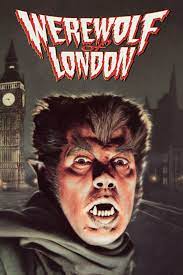
Wilfred Glendon (Henry Hull) is a famous gentleman botanist who journeys to Tibet looking for the rare selenotropic plant named Mariphasa Lupine Lumina. He is attacked and bitten by a werewolf. Back in London, he is approached by another botanist named Doctor Yogami (Werner Oland), who claims to have met him in Tibet. Yogami says Glendon may become a werewolf himself, though the mariposa is a temporary antidote.
Glendon does not believe in this nonsense, until he begins to show symptoms of lycanthropy, such as fur growing on his hands in the light of the moonlamp in his greenhouse, and then a full transformation when the moon is full. He is able to halt the transformation with the mariposa. His wife Lisa (Valerie Hobson) is away at her aunt’s home with her friend and former childhood sweetheart Paul Ames (Lester Matthews) and he makes his way to his lab to process the mariposa a second time, but it seems Doctor Yogami had run off with the only two blossoms to treat his own lycanthropy.
He puts on his hat and coat and steps out into the dark city, where he kills a young girl. Devastated by remorse, he neglects Lisa and spends his evenings on the prowl. The third blossom finally blooms, but Yogami steals that one too. Glendon realizes that Yogami is the werewolf who bit him in the first place. After a battle, he kills Yogami and goes back to the house to find Lisa.
After attacking Paul on the front lawn, though not killing him, he breaks into the house and corners Lisa on the staircase. But his uncle, Colonel Sir Thomas Forsythe (Lawrence Grant) of Scotland Yard arrives with policemen and shoots him. Dying at the bottom of the stairs, he thanks Colonel Forsythe for ending his life, says goodbye to Lisa, and dies, turning human again.
The film was directed by Stuart Walker and was the first feature-length mainstream film with a werewolf. The first such film was an 18-minute short made in 1913 and now lost. Much of the werewolf lore common in movies now was invented for this film: Being bitten makes you a werewolf, changing under a full moon, and the half man/half wolf hybrid. In folklore before that, witches could change into wolves at any time. The score was by Karl Hajos, who used several classical pieces. Warner Oland is, of course, Charlie Chan. A young Spring Byington appeared in the movie. The film was an inspiration for An American Werewolf in London.
Bela Lugosi and Boris Karloff were not available, as desired, for the main characters. Universal Studios stalwart Jack Pierce did the makeup, but his first design was replaced by something more minimalist. The actor felt that the extremely wolflike visage would prevent the other characters from recognizing Glendon, which they must, according to the script. Producer Carl Laemmle agreed, but Pierce was able to use his design later for The Wolf Man. The howl was a blend of the actor’s voice and an actual wolf, but for some reason that was never used again in a werewolf film. The opening scene in Tibet was filmed at Vasquez Rocks, where James Kirk battled the Gorn on Star Trek.
